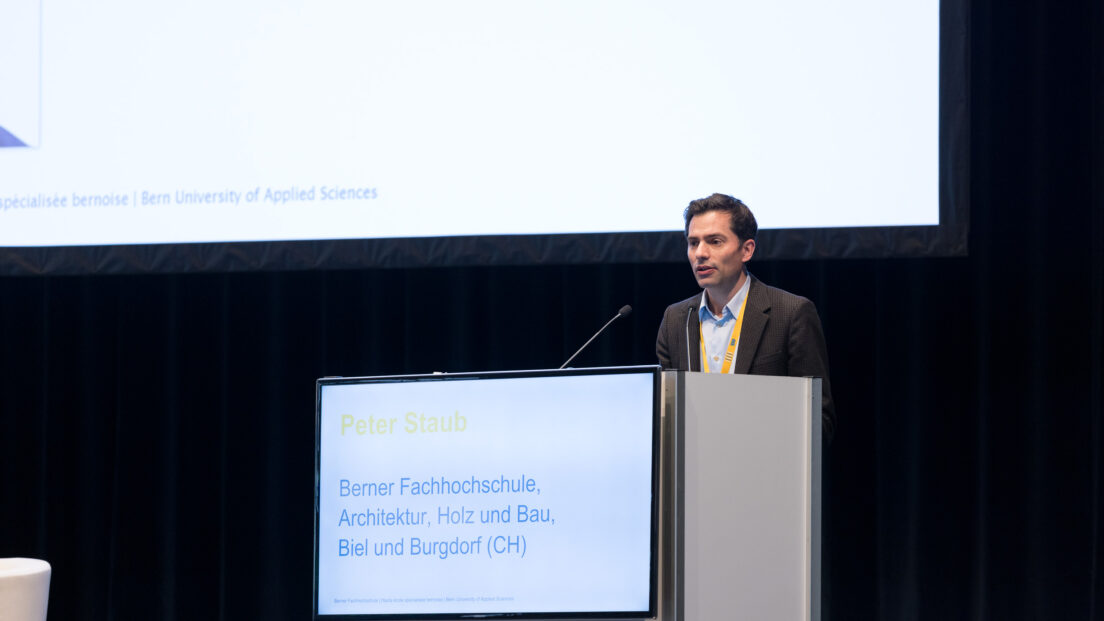Innovations and challenges – windays 2023

Am 23. und 24. März fanden die windays 2023 statt, 20 Jahre nach ihrer ersten Durchführung. Die Fachtagung der Fenster- und Fassadenbranche präsentierte sich erneut als wichtiges Bindeglied zwischen Wirtschaft und Forschung.
After the pandemic-related online event two years ago, it was possible to shake hands again at the Bieler Kongresshaus. Well over 300 professionals took advantage of the opportunity to cultivate their network. The focus of the windays was on the trade exhibition and, above all, the exciting presentations.
Energy, ventilation, comfort
In the first presentation, National Councillor Priska Wismer discussed how politicians want to make the Swiss building stock more sustainable. By 2050, it should consume only half as much energy as it does today. This will only be possible with a significant increase in energy efficiency, as the centrist politician explained.
Kristina Orehounig from Empa presented the great importance of windows for energy-efficient renovation. Her research clearly shows that building envelopes are not only important for energy efficiency in winter. Due to climate change, heat protection in summer plays an increasingly important role. This topic was also taken up by Julia Bachinger from Holzforschung Austria. She presented 10 golden rules that make “cool rooms through cool windows” possible. A central point here is correct ventilation, which is also important for many other areas, as Julian Wenzel (Maco) and Beat Frei from the engineering firm Frei Wüst Expert pointed out in their presentations. According to SIA 180, a ventilation concept is mandatory today. When asked who is responsible for this in renovations, Beat Frei replied: “The window installer, but he often doesn’t know.”
Window installation
In the installation section, Michael Lerch from 4B showed that windows are getting bigger, heavier and more complex. Often, even the insertion of the elements on the construction sites is an elaborate challenge. Most of those involved are aware that installation does not work without perfect planning. But at least as important is the implementation, which depends heavily on the personnel deployed. Dominik Sieber (SFS) emphasised in his presentation that two thirds of complaints are directly or indirectly related to the installation.
One idea to simplify window installation is elastic bonding to the wall. Peter Schober reported on the investigations of Holzforschung Austria on this topic. With bonding, one can combine fastening, insulating and the connections on the outside and inside in one work step. However, specially modified adhesive systems and the corresponding application aids are needed. Peter Schober estimates that such systems could be on the market in two to five years.
Thechallenge of a lack of skilled workers
Since the pandemic, the shortage of skilled workers in the construction industry has become even more acute. Tom Sahli, an expert in personnel recruitment, showed in his presentation that for many employees the values of a company are clearly more important than the technical issues of the job. The younger generation’s ideas have also changed significantly in various other areas. Basically, companies today apply to potential employees, not the other way around.
A panel discussion on the same topic produced some exciting approaches. Nicole Wenger, for example, described how her company, Wenger Fenster AG, now allows part-time work in all areas, including assembly. The company also employs people with disabilities.
Markus Stebler explained that at his company, Stebler Glashaus AG, peers from the future team conduct the job interviews. The HR managers join them later.
In his small company in Reitnau AG, Heinrich Hochuli relies on continuing to employ his own apprentice carpenters after they have completed their apprenticeship. As a representative of the Association of Master Carpenters, he also pointed out the projects that the VSSM is launching to counteract the shortage of skilled workers.
Human resources expert Tom Sahli recommended that companies continue to develop their existing employees. Due to the full order books and the lack of resources, this is difficult, but worthwhile in any case.
Sustainability
Hansueli Schmid from Lignum spoke about the life cycle assessment of windows. Up to now, there has been little demand for precise values in window construction. However, this could change in the foreseeable future if ecological criteria become relevant when awarding contracts. BIM could act as a solution provider here.
The presentation by Gerald Feigenbutz, from the Quality Association for Plastic Window Profile Systems, also dealt with ways to more sustainability. His organisation is striving to further increase the proportion of recycled material in plastic windows. At the moment it is 25%. The decisive factor for the recyclability of the products is that they can be easily separated into the materials used at the end of their service life. This process must already be taken into account during development.
Digitalisation
Two examples showed how much potential the use of simulations offers. Karim Ghazi Wakili from the Bern University of Applied Sciences BFH presented hygrothermal simulations of terrace connections. And the female duo Vasiliki Gkesouli/Julia Hauth presented the project “Glass rebate bonding for plastic windows”. They used FEM models and DIC technology for their development. This not only saved them a lot of time and money, they were also able to benefit from the high reliability of modern technology.
Nikita Aigner came up with an exciting practical example. Together with a team from BFH, he digitised and automated the renovation of windows in architecturally valuable buildings. The process begins with taking measurements at the construction site. Based on the data collected there, a robot can take over the tedious manual work of glazing and milling.
Outlook
The windays are held every two years. The next windays will take place on Thursday, 3 April and Friday, 4 April 2025.